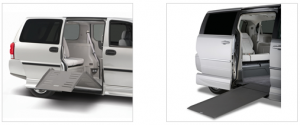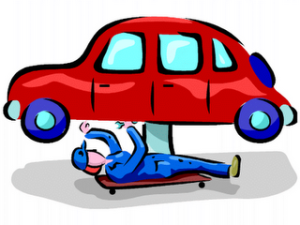There are several wheelchair accessible van conversion styles you’ll want to consider when choosing the right mobility solution for you. One decision you’ll have to make is to choose between an In-Floor wheelchair van ramp and a Fold-Out wheelchair accessible ramp.
In-Floor Vs. Fold-Up Wheelchair Ramps
Another important consideration to make is whether you’d prefer a fold-up or an in-floor wheelchair ramp in your handicap van. As their name implies, fold-up ramps fold in half and stow upright, next to the side passenger door. On the other hand, in-floor ramps slide into a pocket underneath the vehicle’s floor. People who opt for in-floor ramps prefer the ramp out of the way of the passenger entrance. Typically, fold-up ramps tend to be less expensive and easier to maintain, and they present a lower ramp angle. In-floor and fold-up wheelchair ramps are available in a wide range of handicap minivan conversions.


